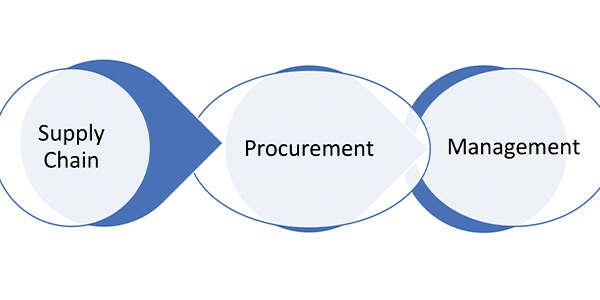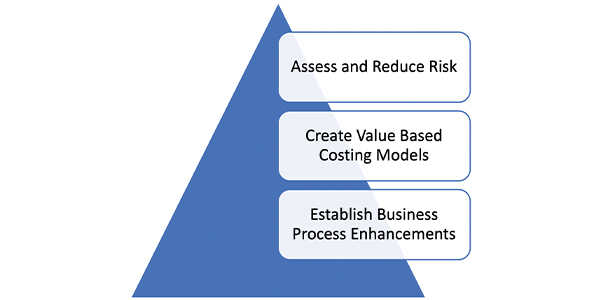When purchasing managers approach their procurement responsibilities in a serious way it is because they want to make decisions that consistently produce favorable results.
I have been studying both the science and art of decision-making and have come to several conclusions that will be outlined in this article.
This discussion is designed for any person who must make decisions, but more specifically for supply chain procurement professionals and management.
Over the long term, I have developed an appreciation for the relationship between good decision-making and how we think about our responsibilities in supply chain and purchasing management.

I strongly believe our responsibilities in this area are to accomplish three primary benefits to the organization: to assess and reduce risk, to create value-based costing models, and to establish business process enhancements.

Assess and Reduce Risk
There are significant risks in the decisions we make regarding purchasing in the course of choosing suppliers, negotiating contracts and managing vendors.
The procurement professional must be able to identify these risks and establish guidelines in weighing the relevance and potential consequences of these risks, eventually leading to strategic planning to eliminate, mitigate or transfer exposure away from the company.
On-shoring and near-shoring are examples of strategic risk mitigation associated with foreign sourcing. In the case of China, for example, where the ongoing exposure to the costs and uncertainty of ocean and air transport, the unknowns associated with tariffs and trade negotiations, and new geo-political risks may lead the procurement professional to investigate sourcing options that mitigate these risks. Sourcing options such as the U.S., Mexico and other favorable trade-status countries may result in additional benefits, such as shorter lead-times and lower landed costs.
Create Value-Based Costing Models
“Creating value-based costing models” does not mean simply “reduce costs.” Cost reduction can generally be more easily achieved than creating value-based costing models, but in actuality is a poor choice. A better choice is for a purchasing manager to obtain “the very best value for their spend.”
Creating value adds benefit. Costs are a relative factor. Lower costs typically come with an increase in risk. Obtaining robust value combines minimizing risk and still being able to negotiate responsible pricing.
Not the “cheapest” … but a price which brings value.
Establish Business Process Enhancements
Business process enhancements bring value to a company purchase. This is best illustrated with an example.
Company A is finalizing a contract to purchase a year’s worth of a component utilized in its manufacturing process.
The terms are all agreed, and the pricing works for both parties. But the purchasing manager is seeking to determine if business process improvements can also be included in the new vendor relationship.
As it turns out, the manufacturer has limited space for a year’s worth of inventory but at the same time utilizes the components every day, with three shifts being run and inventory continually being depleted.
An arrangement is made that the vendor will be provided access to its customer’s inventory system so it can see the rate of depletion every day.
The vendor agrees to provide a “vendor-managed inventory system” that will guarantee weekly replenishment activity, based on their actual usage and need.
This system resolves both the issues of inventory being maintained off-site and always having sufficient product for manufacturing as required by the utilization and demand requirements.
This is an example of a business process enhancement that adds value to the purchasing decision and works to everyone’s benefit, including the vendor. The vendor is now more aligned as a “partner” in the company’s manufacturing supply chain and not just another vendor. Its value is now greater to their client in this new role.
It creates the “win-win,” where both parties gain from the agreement.
Take a Mindset Approach
I faithfully believe in this often-quoted continuum: Thoughts create mindset; Mindset leads to decisions; Decisions lead to actions; Actions have consequences; Better decisions lead to better results.
Better, more favorable results are what we are searching for consistently and sustainably. Following this continuum allows the mindset to be a critical factor in the beginning of the strategy to make better decisions.
Better decisions stem from the accumulation of multiple factors: Confidence, information, understanding human behavior, emotional intelligence and understanding quantitative and qualitative analysis. I’ll cover the first three factors in this article and the final two in a Part 2 article.
Confidence
Confident people negotiate life and business more successfully. They tend to make better decisions. They are better informed, better prepared and more easily navigate the challenges we face daily in the execution of our responsibilities in business as well as in our personal lives.
Confidence comes directly from quality preparation. My experience in the military taught us to deal with the potential consequences of life and death decisions, typically made in the heat of battle.
Our ability to manage the most serious of consequences was to be successfully and most thoroughly prepared. Information gain, training and rehearsal in a robust and strategic way offered the best opportunity to be prepared for battle.
In purchasing and supply chain management, the consequences may not be life or death as in the military, but they can make or break a corporate business model, impact margin, sustainability and operational success.
The ability to produce favorable results comes from confidence, and confidence comes through preparation.
Mining & Information Gain
Making better decisions is more easily accomplished when we have access to intelligence – intelligence that comes in the form of quality information flow, resources and successful analysis.
Developing a robust information flow in the form of benchmarking, competitive analysis, contemporary market conditions, industry standards, pricing parameters, technology considerations, etc., all lead to the ability to make a better decision as a more informed executive.
Understanding Human Behavior
We do not communicate to companies. We communicate to people who work for companies (albeit often electronically).
How people behave influences how they manage relationships, how they negotiate and how they handle their business and personal responsibilities.
The more we understand behavior, the better we can navigate relationships and come to better decisions.
Decisions are heavily influenced by behavior; therefore, behavior and decision-making are related closely.
For example, how we choose to influence a person’s behavior when that person is very easy to deal with — as compared to someone who is highly sensitive and emotionally tightly wound — would likely be very different.
How we might approach a negotiation with a vendor with whom we have developed a bond, a trust and tenured rapport with would be very different from a brand-new supplier with whom we have no experience. Personally, I have become a better manager, a better negotiator and one who achieves a high degree of success because I have taken the time and initiative to better understand human behavior.
At the end of the day, understanding human behavior better prepares you to influence decisions with more favorable results.
Summary
The “Procurement Manager of the Future” will have his or her fate decided by the quality and success of the decisions they make in sourcing, purchasing, and vendor management, thereby making the skill set of decision-making a high priority in achieving capability and prowess.
The process of becoming a better decision-maker is to build a strong foundational mindset built on confidence, information and an understanding of human behavior. These are topics we have covered in part one of this two-part series.
Next month, we’ll have a discussion of the final two components of good decision-making: the value of developing and practicing a robust level of emotional intelligence (EQ); and taking a balanced approach to quantitative and qualitative analytical and operational proficiency. Whether you’re hiring externally or bolstering the skillset of your existing team, or perhaps tapping the potential in key contributors from other parts of your organization, we hope this two-part series will provide welcome insight.
The benefits, accolades and success stories will mount up over time leading to an established career and future leadership roles in the organizations that profit from your service.













